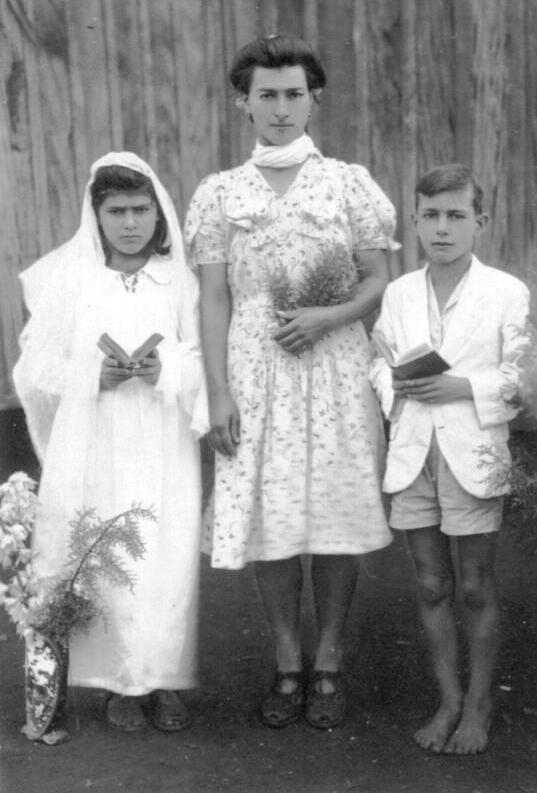
Italian Emigrants Choose Brazil: Culture

Figure 1.--These photos were taken in "Bratislava em Cambé", a village 13 km west of Londrina (Paraná State, Brazil). We know their name and the year of birth of the three siblings: Laurinda (born in 1932), Ana (1926) and Ricardo (1934). So we can assume that the photo was taken in early 1940s. They belonged to a third generation Italian emigrant family. The clothing worn by the children seems very plain. In Italy bare feet at the time during an important celebration would have been a sign of greatest poverty, but in that context could have also a cultural connotation. It probably is a relection on the relative success of Ita-lians in Brazil and America.
|
|
Many Europeans have emigrated to Brazil. Other than Poruguese, the largest European immigrant group in Brazil is Italian. A factor here is that Italy is one of the most populace European country, and the poorest of the major countries. Large numbers of Itlians emigrated to the United States, Argentina, and Brazil in the late-19th century and early 20th-century. Argentina and Brazil offfered cultural similarities (religion and language) that the United states did not offer. And in the 19th century it was not at all clear that America would emerge as such a succesful, rich country. In fact it look at the time that Argentina was going to become a very successful country. And there were high hopes for Brazil as well. As a result, many Italians opted for Argentina and Brazil rather than the United States. Italian emigration began shifting to the United States because of the greater economic opportunities there.
Even larger numbers of Italuans eventually emigrated to the United States, despite the fact that America was a largely Protestant country. Economic opportunity was a major draw, but openess and toleration of cultural differences overcame the cultural similarities of Argentina and Brazil. More than a million Italians entered Brazil, far more than any other nationality (1884-1903). This was the peak period of immigration. The Prinetti Decree (1902) ended subsidised emigration to Brazil. This significantly reduced Italian immigration. After World War I the United States began restricting immigraion. This reduced the options for Italian and other European immigrants. Various sourcs estimate that Italians represent 10-15 percent of the population. This is based on cultural self identification. Actualy etnicity may be somewhat less. Italians are especially imprtant in the São Paulo area. We note the Quadri family in 1927, an Italian immigrant family.
HBC

Related Chronolgy Pages in the Boys' Historical Web Site
[The 1880s]
[The 1890s]
[The 1900s]
[The 1910s]
[The 1920s]
[The 1930s]
[The 1940s]
[The 1930s]
[The 1940s]
[The 1950s]
[The 1960s]
[The 1970s]
[The 1980s]
Related Style Pages in the Boys' Historical Web Site
[Smocks]
[Long pants suits]
[Knicker suits]
[Short pants suits]
[Socks]
[Eton suits]
[Jacket and trousers]
[Blazer]
[School sandals]
[School smocks]
[Sailor suits]
[Pinafores]
[Long stockings]
Navigate the Boys' Historical Clothing Web Page
[Return to the Main Italian-Brazilian page]
[Return to the Main Brazilian ethnicity page]
[Return to the Main Brazilian country page]
[Introduction]
[Activities]
[Biographies]
[Chronology]
[Clothing styles]
[Countries]
[Bibliographies]
[Contributions]
[FAQs]
[Portuguese glossaries]
[Images]
[Links]
[Registration]
[Tools]
[Boys' Clothing Home]
Created: 3:28 AM 5/13/2019
Last updated: 3:28 AM 5/13/2019



